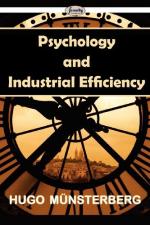All parts of physiological psychological optics can contribute similar material. The questions of color harmony and color contrast, light intensity and mutual support of uniformly colored objects, of irradiation, depth and perspective, are significant for an effective display in the show-window, and the laboratory results can easily be translated into psychotechnical prescriptions. But here it is still more necessary to separate carefully the merely optical impression from its aesthetic side. All that we claimed as to the poster is still more justified for the presentation of the saleable objects themselves. As soon as the display of the articles forms a real work of art, it must produce inhibitions in the soul of the spectator by which the practical economic desire is turned aside. Beauty here too has strong power of attraction, and moreover the suggestive power, by which it withdraws our senses from the chance surroundings, forces us to lose ourselves in the offered presentation. But just through this process the content of the display becomes isolated and separated from the world of our practical interests. Our desires are brought to silence, we do not seek a personal relation to the things which we face as admiring spectators, and the intended economic effect is therefore eliminated. Whoever is to examine the psychotechnics of displays and exhibitions must therefore study the psychology of aesthetic stimulation, of suggestion, of the effects of light, color, form and movement, of apperception and attention, and ought not to forget the psychology of humor and curiosity, of instincts and emotions. For us the essential point is that here too the experimental psychological method alone is able to lead from mere chance arrangements founded on personal taste to the systematic construction which secures with the greatest possible certainty the greatest possible mental effect in the service of the economic purpose.




